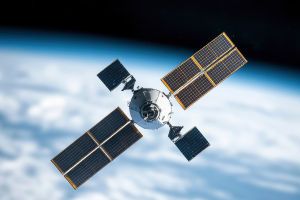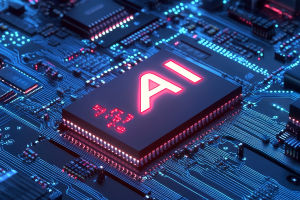Artificial Intelligence (AI) has emerged as a transformative force across countless domains, from healthcare and finance to entertainment and communication.
As AI adoption skyrockets in 2025, questions arise about its potential to overwhelm or even "break" the internet—the very infrastructure that supports its rapid evolution.
The AI Data Surge: Straining Internet Infrastructure
AI systems, especially generative AI and large language models, require enormous computational power and data movement. Their operation depends on transferring vast datasets between cloud servers, data centers, and end users—often at unprecedented speeds and volumes. Industry experts highlight the sudden surge in demand for data transmission capacity, noting that traditional internet architectures were not designed for such traffic patterns.
Dave Ward, Chief Technology and Product Officer at Lumen Technologies, notes: “The internet’s once-laudable egalitarianism now produces network latency and congestion while stoking an arms race to stockpile compute around a handful of hubs. The near-term future of AI infrastructure lies in direct access between corporate clouds and AI hyperscalers with dedicated links for maximum throughput and strategic speed".
This shift challenges legacy hub-and-spoke network topologies, pushing service providers into historic expansions of high-speed fiber optic networks capable of rerouting AI traffic dynamically.
Energy and Power Grid Challenges
The strain AI places on internet infrastructure goes hand in hand with rising energy consumption. Data centers, the heart of AI’s digital engines, demand continuous, high-density power supplies with sophisticated cooling systems. Reports indicate that electricity consumption by US data centers surged from 58 terawatt-hours (TWh) in 2014 to 176 TWh in 2023, with projections up to 580 TWh by 2028 largely driven by AI workloads.
This explosion presents grid stability challenges. Power companies grapple with managing concentrated, 24/7 loads and interconnection bottlenecks. A Deloitte survey in 2025 revealed that around 79% of US power and data center executives expect AI-related power demand to rise sharply through the coming decade, risking connection delays and potential outages if grids cannot adapt.
Jensen Huang, CEO of NVIDIA, famously stated: “Every company is becoming a technology company. And every company will become an AI company". Huang’s insight underscores that AI’s integration into the business ecosystem will intensify infrastructure demands, elevating the stakes for ensuring sustainable energy availability.
Infrastructure Evolution: Meeting the Challenge
While AI’s growth stresses existing networks, it simultaneously drives innovation in infrastructure design. Leading cloud and network providers are responding with record investments in fiber optic expansions, edge computing nodes closer to users, and flexible networking architectures that allow dynamic traffic management. These changes aim to circumvent bottlenecks, reduce latency, and provide resilient connections tailored to AI’s intensive needs.
Moreover, efforts focus on sustainability, leveraging renewable energy sources and improving data center efficiencies to mitigate environmental impact. The World Economic Forum highlights the necessity of clean, scalable AI infrastructure to ensure AI’s environmental footprint aligns with global climate goals.
A Holistic Strategy for AI-Native Organizations
The future of AI and the internet involves more than infrastructure upgrades. Firms must adopt integrated strategies combining cloud, data, and network planning. AI workloads demand seamless cooperation between data centers, cloud providers, and network operators to maintain throughput and agility.
The winners in this evolving landscape will be organizations that embed AI into their entire value chain, optimizing infrastructure and business models together. This AI-native approach emphasizes speed, flexibility, and sustainability, shaping the next generation of digital competition.
AI’s rapid expansion undoubtedly places significant pressure on internet infrastructure, raising legitimate concerns about latency, congestion, and energy consumption. Yet rather than breaking the internet, AI acts as a catalyst for transformative change, accelerating network upgrades, energy innovation, and strategic thinking across industries.


